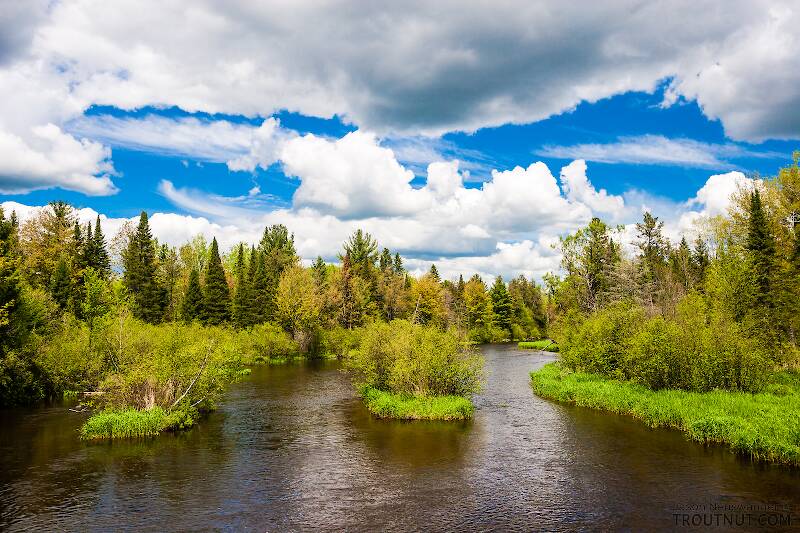
Hex Mayflies
Hexagenia limbata
The famous nocturnal Hex hatch of the Midwest (and a few other lucky locations) stirs to the surface mythically large brown trout that only touch streamers for the rest of the year.


Stonefly Species Isoperla bifurcata (Yellow Sallies)
Species Range
Identification
Species ID from GBIFthe Global Biodiversity Information Facility
Source: The Isoperla Of California (Plecoptera: Perlodidae); Larval Descriptions And A Key To 17 Western Nearctic Species
Diagnosis. Male larvae of Isoperla bifurcata are most similar to Isoperla acula and can be separated by having fine silky setae sparse on dorsal surface of femora, numerous but not continuous on tibia (Fig. 20 d), and abdomen without a distinct median dark stripe (Fig. 6 d).
Physical description
Most physical descriptions on Troutnut are direct or slightly edited quotes from the original scientific sources describing or updating the species, although there may be errors in copying them to this website. Such descriptions aren't always definitive, because species often turn out to be more variable than the original describers observed. In some cases, only a single specimen was described! However, they are useful starting points.
Description from GBIFthe Global Biodiversity Information Facility
Source: The Isoperla Of California (Plecoptera: Perlodidae); Updated Male Descriptions And Adult Keys For 18 Western Nearctic Species
Male. Aedeagus: sclerotized posterior process present; body with one posterobasal lobe, one posteromedian lobe, one large dorsal lobe and one anterior lobe (Fig. 4 a); sclerotized process length> 0.5 mm, distal-projecting portion recurved and deeply bifurcate, apices of bifurcate arms with acute points and secondarily barbed (Figs. 4 a-c), and length of proximal-attached base (Fig. 4 a, 1) less than the total length of distal-projecting median arm (Fig. 4 a, 2), bifurcate arms (Fig. 4 a, 3), and apical tine (Fig. 4 a, 4). Abdominal terga 8 - 9, 9, 9 - 10: without stout spinulae or long stout setae. Posterolateral margins of at least abdominal segment 8 with scale-like setae clustered in brushes of several setae. Paraprocts: curved dorsally, length if straightened subequal to combined first and second cercal segments, tapering abruptly to variable blunt to sharp apices (Fig. 4 c). Vesicle: pedunculate, length subequal to width, constricted near base with curved lateral margins, wider and rounded at apex (Fig. 4 d).
Start a Discussion of Isoperla bifurcata
Stonefly Species Isoperla bifurcata (Yellow Sallies)
Species Range
Common Names
Resources
- NatureServe
- Integrated Taxonomic Information System
- Global Biodiversity Information Facility
- Described by Szczytko, S.W. & Stewart, K.W. (1979) The genus Isoperla (Plecoptera) of western North America; holomorphology and systematics and a new stonefly genus Cascadoperla. Memoirs of the American Entomological Society 32, 1–120.

